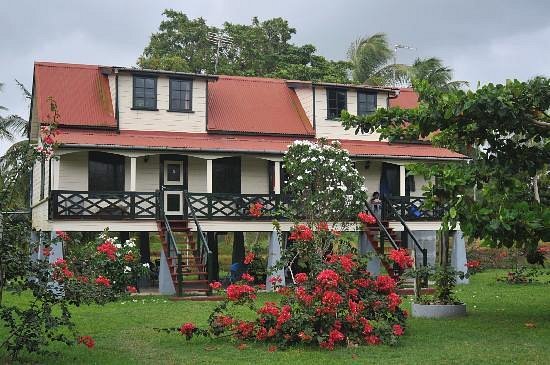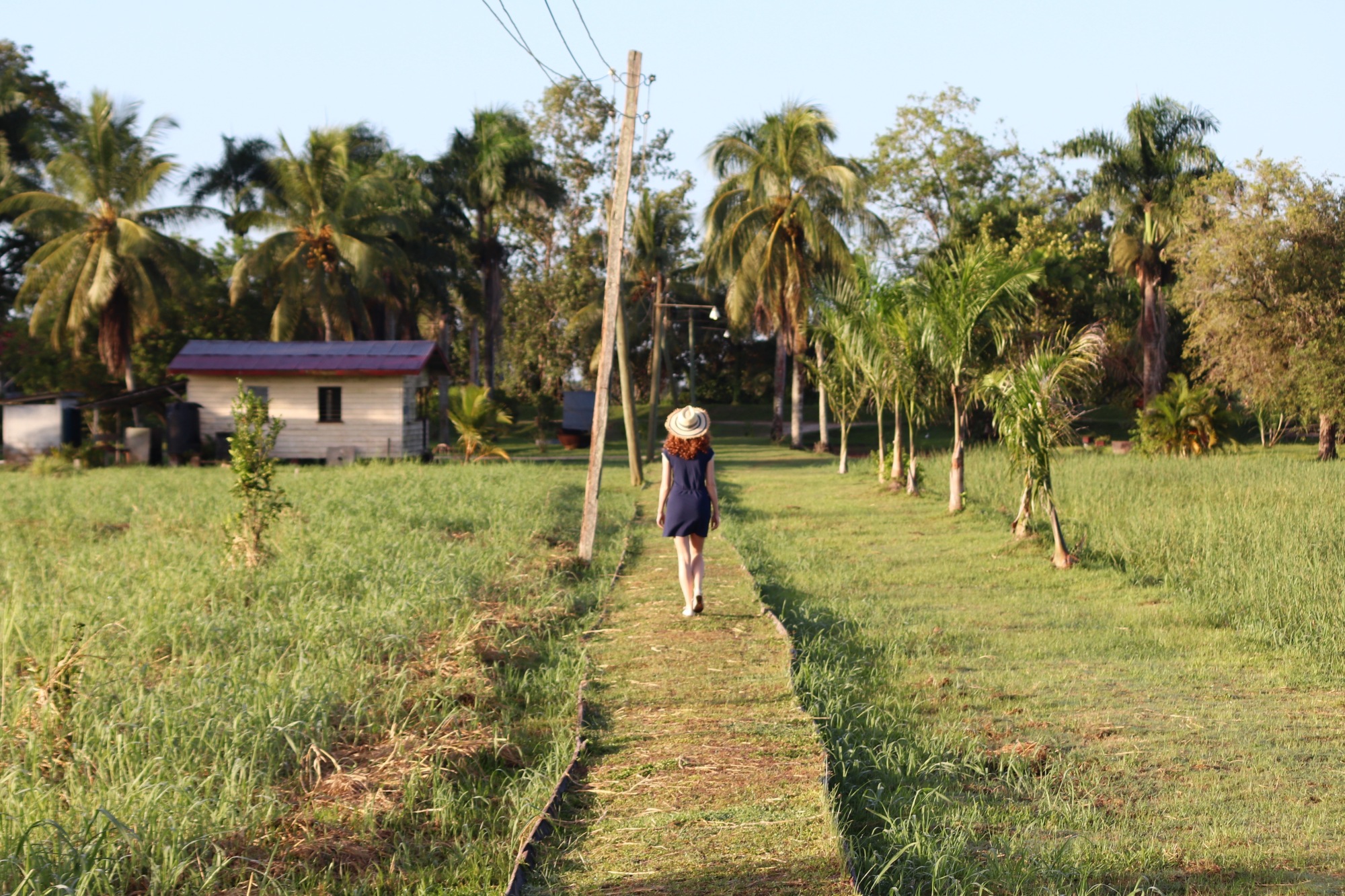Ready to step back in time and immerse yourself in the rich history of Suriname? Join us on a journey through the plantations of Commewijne, where you’ll discover the remnants of a bygone era. Surrounded by lush greenery and the gentle flow of the Commewijne River, these plantations bear witness to the country’s colonial past and the impact of the sugar and coffee industries. As you wander through the plantations, you’ll uncover stories of triumph, tragedy, and resilience, gaining a deeper understanding of Suriname’s past and its vibrant cultural heritage. So grab your sense of adventure and let’s explore the plantations of Commewijne together.
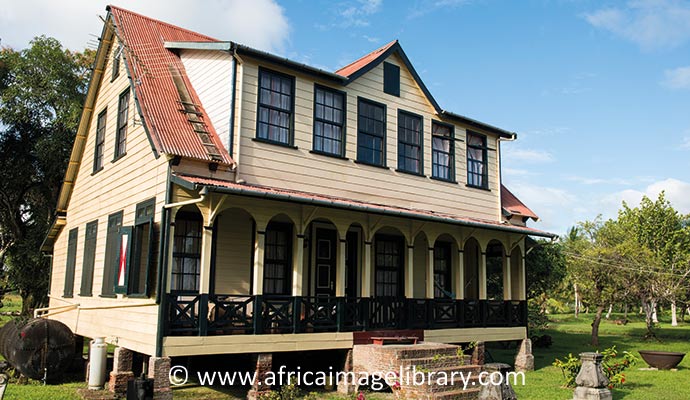
History of Plantations in Suriname
Introduction to plantation culture
Plantation culture has played a significant role in the history and development of Suriname. These plantations were large agricultural estates that were predominantly owned by Dutch colonizers during the colonial period. The plantations were primarily established for the cultivation of cash crops such as sugar, coffee, and cacao. This article will delve into the rich history of plantations in Suriname, with a focus on the Commewijne district.
Arrival of the Dutch in Suriname
The Dutch arrived in Suriname in the 17th century, seeking to establish trade routes and exploit the region’s natural resources. Recognizing the fertile soil and favorable climate, the Dutch settlers quickly turned their attention to agriculture. They established numerous plantations along the rivers, including the Commewijne River, which became the center of plantation activity in Suriname.
Development of sugar plantations
One of the most significant developments in Suriname’s plantation history was the establishment of sugar plantations. The Dutch colonizers introduced sugarcane cultivation and built large-scale sugar mills to process the cane into sugar. These plantations required a substantial labor force to meet the growing demand for sugar in Europe. As a result, enslaved Africans were forcibly brought to Suriname to work on the sugar plantations, which led to the horrific era of slavery.
Slavery on the plantations
Slavery was a brutal and unjust system that formed the backbone of the plantation economy in Suriname. Enslaved Africans were subjected to inhumane treatment, forced labor, and harsh living conditions on the plantations. They played a crucial role in the cultivation and production of cash crops, particularly sugarcane. The plantation owners amassed enormous wealth through the labor of enslaved people, creating a stark social and economic divide in Surinamese society.
Overview of Commewijne
Location and geography
Commewijne is a district located on the northeastern coast of Suriname. It is bordered by the Atlantic Ocean to the north and the Suriname River to the west. The district encompasses a diverse range of landscapes, including fertile agricultural lands, mangrove forests, and picturesque riverside communities. Its proximity to the capital city of Paramaribo makes it easily accessible for visitors looking to explore Suriname’s plantation heritage.
Population and demographics
Commewijne is home to a vibrant and multicultural population. The district has a mix of ethnicities, including Afro-Surinamese, Indo-Surinamese, Javanese, and Chinese. The diverse heritage of the population is reflected in the rich tapestry of traditions, cuisines, and cultural events that can be experienced in Commewijne. The district offers visitors a unique opportunity to immerse themselves in the local way of life and interact with its welcoming residents.
Tourism in Commewijne
In recent years, Commewijne has emerged as a popular tourism destination in Suriname. Its historical plantations, untouched nature reserves, and cultural heritage make it an ideal place for travelers seeking an authentic and immersive experience. The district offers a range of activities for visitors, including guided tours of plantations, wildlife spotting, river cruises, and exploring local artisanal crafts. Commewijne provides a fascinating glimpse into Suriname’s plantation history and its rich cultural diversity.
Must-Visit Plantations in Commewijne
Plantation Peperpot
Plantation Peperpot is a must-visit destination for history enthusiasts and nature lovers. This former coffee and cacao plantation has been transformed into a nature reserve, showcasing the harmonious coexistence of wildlife and human history. The Peperpot History Museum offers insights into the plantation’s history and the impact of slavery on its development. Visitors can also explore the plantation ruins, wander through the lush nature trails, and spot a variety of bird species in their natural habitat.
Plantation Frederiksdorp
Located on the banks of the Commewijne River, Plantation Frederiksdorp offers a glimpse into Suriname’s colonial past. This well-preserved plantation features historical architecture that showcases the influence of Dutch colonial design. Guided tours provide visitors with a fascinating narrative of the plantation’s history and its transition from sugar production to cacao cultivation. Travelers can also indulge in the plantation’s rustic accommodations, which offer a tranquil retreat surrounded by nature.
Plantation Mariënburg
Plantation Mariënburg offers a unique perspective on Suriname’s plantation history with a focus on sugar production. The highlight of a visit to Mariënburg is the opportunity to witness the operations of a modern sugar factory. Visitors can take a guided tour and observe the various stages of sugar production, from the harvesting of sugar cane to the processing and packaging of sugar. The plantation also preserves the historical traces of slavery, with exhibits and displays that provide insights into the lives of enslaved people on the plantations.
Plantation Laarwijk
For those interested in immersing themselves in local traditions and cultural heritage, Plantation Laarwijk is a must-visit destination. This plantation is known for its traditional cuisine, handicrafts, and vibrant cultural events. Visitors can savor authentic Surinamese dishes, handmade by locals using traditional cooking techniques and locally sourced ingredients. Traditional handicrafts such as basket weaving and pottery can also be learned and purchased as souvenirs. River cruises along the Commewijne River, accompanied by local musicians, offer a memorable way to explore the beauty and tranquility of the region.
Exploring Plantation Peperpot
Peperpot History Museum
A visit to Plantation Peperpot is incomplete without exploring the Peperpot History Museum. The museum provides a comprehensive understanding of the plantation’s history and its significant role in Suriname’s development. Exhibits display artifacts, documents, and photographs that shed light on the daily lives of plantation owners, enslaved Africans, and the workers who labored on the estate. The museum’s interactive displays and knowledgeable guides ensure an engaging experience for visitors of all ages.
Nature Reserve and Plantation Ruins
The Peperpot Nature Reserve offers a serene and untouched environment for nature enthusiasts. Visitors can explore the lush trails that wind through the plantation’s ruins, which include the remnants of the coffee and cacao processing facilities, workers’ quarters, and administrative buildings. The juxtaposition of the decaying structures with the vibrant flora and fauna creates a captivating atmosphere that transports visitors back in time. Birdwatchers will be delighted by the variety of bird species that inhabit the reserve, making it a perfect spot for wildlife spotting and photography.
Wildlife Spotting
Peperpot Nature Reserve is a haven for wildlife, providing a sanctuary for many species. As visitors explore the trails, they may encounter monkeys swinging through the treetops, colorful butterflies fluttering by, and reptiles basking in the sun. Birdwatchers will be treated to sightings of exotic avian species such as the Crimson Topaz and the Rufous Crab Hawk. Whether you are an avid nature enthusiast or simply seeking a peaceful escape, Peperpot Nature Reserve offers an unforgettable experience.
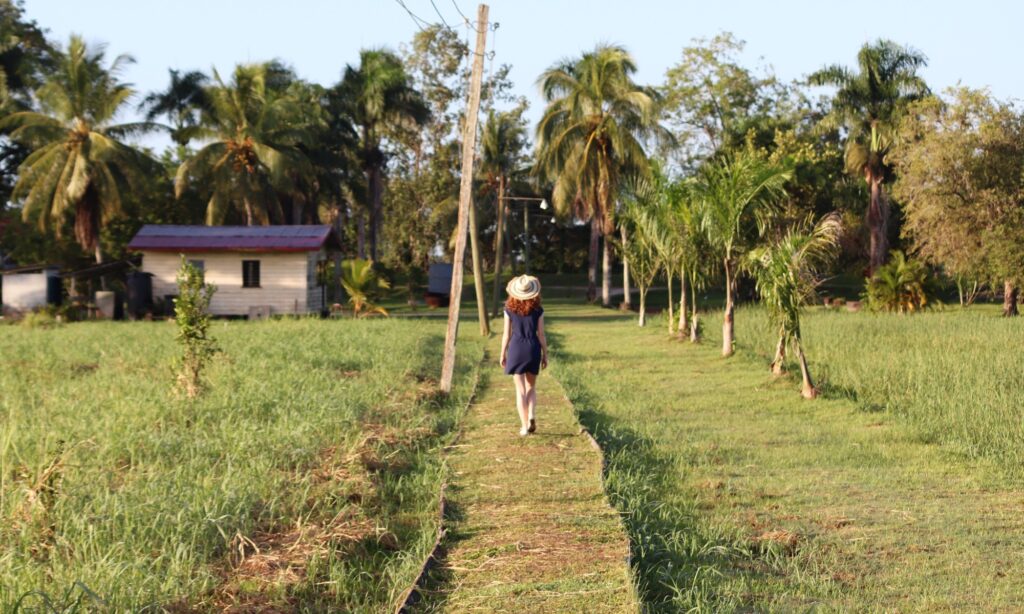
Discovering Plantation Frederiksdorp
Historical Architecture and Guided Tours
Plantation Frederiksdorp is renowned for its well-preserved historical architecture, which reflects the Dutch colonial influence on Suriname’s plantations. Visitors can explore the restored plantation buildings, including the grand plantation house, overseer’s quarters, and slave quarters. Guided tours provide a captivating narrative of the plantation’s history, offering insights into the daily lives of the plantation owners and the enslaved people who toiled on the estate. The preservation of these historical structures allows visitors to step back in time and gain a deeper understanding of Suriname’s plantation heritage.
Cacao and Coffee Plantations
While Plantation Frederiksdorp was initially a sugar plantation, it later transitioned to the cultivation of cacao and coffee. Visitors can learn about the endeavors and challenges faced by the plantation owners in adapting their crops to changing market demands. Guided tours provide a comprehensive understanding of the cultivation, processing, and exporting of these cash crops. The plantation’s proximity to the river also played a crucial role in facilitating transportation and trade, making it a key player in Suriname’s plantation economy.
Rustic Accommodations
Plantation Frederiksdorp offers visitors the unique opportunity to stay in rustic accommodations, which consist of beautifully restored colonial-style buildings. These comfortable and charming lodgings blend historical authenticity with modern amenities. Staying on the plantation allows guests to fully immerse themselves in the ambiance of Suriname’s plantation history and experience the tranquility of the surrounding nature. Waking up to the sounds of birdsong and enjoying a leisurely breakfast overlooking the plantation grounds is an enchanting way to start the day.
Uncovering Plantation Mariënburg
The Modern Sugar Factory
A visit to Plantation Mariënburg provides an intriguing contrast between the historical past and the modern-day realities of sugar production. The centerpiece of the plantation is the modern sugar factory, where visitors can witness the intricate processes involved in turning sugar cane into refined sugar. Guided tours offer an in-depth look at the various stages of sugar production, from the harvesting and crushing of sugar cane to the purification and crystallization of sugar. The factory’s industrial machinery and bustling activity provide a fascinating insight into Suriname’s contemporary agricultural practices.
Historical Traces of Slavery
While Plantation Mariënburg showcases the advancements in sugar production, it also acknowledges the harsh realities of Suriname’s plantation history. The plantation preserves and displays artifacts, photographs, and documents that depict the lives of the enslaved people who labored on the estate. Visitors can learn about their daily lives, their struggles, and their resistance against the oppressive system of slavery. This historical perspective serves as a somber reminder of the dark chapters in Suriname’s past and the ongoing importance of acknowledging and addressing the implications of slavery.
Sugar Cane Fields
Venturing beyond the sugar factory, visitors can stroll through the vast sugar cane fields that stretch as far as the eye can see. The sight of the neatly lined rows of sugar cane swaying in the breeze is a picturesque reminder of the agricultural heritage that shaped Suriname’s economy. Plantation Mariënburg offers an opportunity to gain a deeper understanding of the cultivation and harvesting techniques involved in sugar cane production. Immersed in the lush green surroundings, visitors can appreciate the labor-intensive processes required to transform sugar cane into the sweet commodity that played a pivotal role in Suriname’s plantation history.
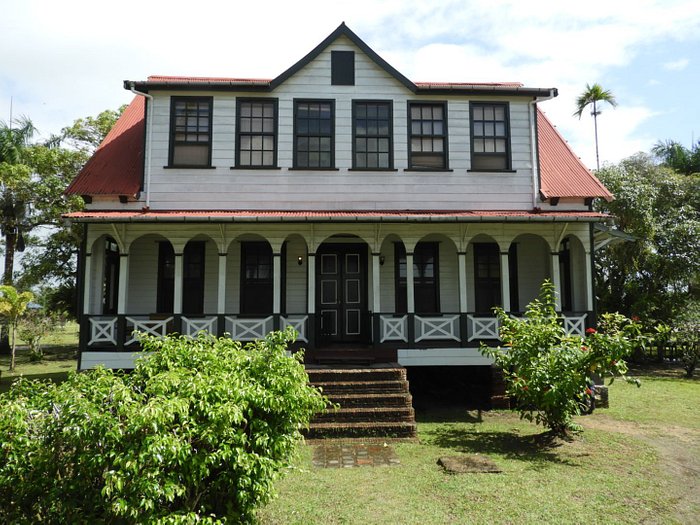
Experiencing Plantation Laarwijk
Cultural Heritage and Local Traditions
Plantation Laarwijk is a vibrant and culturally rich destination that immerses visitors in the traditions and heritage of Suriname’s diverse population. The plantation showcases the multifaceted nature of Surinamese society, with influences from Afro-Surinamese, Javanese, and Chinese cultures. Visitors can engage with locals and participate in cultural activities like dance performances, traditional music, and storytelling sessions. This interactive experience allows visitors to gain a deeper appreciation for the unique fusion of cultures that have shaped Suriname’s identity.
Traditional Cuisine and Handicrafts
Plantation Laarwijk is renowned for its delicious traditional Surinamese cuisine. Visitors can savor mouthwatering dishes such as roti, pom, and saoto soup, all prepared using authentic recipes handed down through generations. For those seeking to take a piece of Suriname’s culture home, local artisans offer their handcrafted creations for sale. Whether it’s intricately woven baskets, vibrant batik textiles, or beautifully carved wooden sculptures, there is something for everyone to appreciate and support the local artisans.
River Cruises and Fishing
Situated along the Commewijne River, Plantation Laarwijk offers the perfect starting point for scenic river cruises. Traveling along the tranquil river, visitors can admire the mangrove forests, spot wildlife, and witness the daily life of riverside communities. Fishing enthusiasts can try their hand at traditional Surinamese fishing techniques, guided by local experts who share their knowledge and experiences. Exploring the river is a captivating way to experience the natural beauty of Commewijne while gaining insights into the role of rivers in the daily lives of Surinamese people.
The Commewijne River
Navigating the Commewijne River
The Commewijne River serves as a lifeline and a source of livelihood for the communities residing along its banks. Navigating this picturesque river is an essential part of exploring the plantations and experiencing the natural wonders of the district. Traveling by boat allows visitors to meander through scenic waterways, witness local fishermen in action, and soak in the peaceful ambiance that surrounds them. The river’s strategic location and historical significance make it an integral part of Suriname’s plantation heritage.
River Tours and Fishing
River tours are a popular activity for visitors to Commewijne, offering a chance to explore hidden gems and encounter wildlife in their natural habitats. These tours typically include visits to historical plantations, wildlife spotting, and stops at riverside villages to learn about the local way of life. Fishing enthusiasts can try their hand at catching local fish species, guided by experienced fishermen who impart their knowledge and techniques. Whether you are seeking relaxation, adventure, or cultural immersion, the Commewijne River provides a captivating setting to experience Suriname’s natural and cultural heritage.
Mangroves and Avian Diversity
The Commewijne River is flanked by vast stretches of mangrove forests, which are vital ecosystems that support a diverse range of plant and animal species. These mangroves serve as nurseries for many marine creatures, providing shelter and sustenance. Birdwatchers will be delighted by the abundance of avian diversity that can be spotted in the mangrove forests, including herons, kingfishers, and flamingos. Exploring the mangroves by boat offers a unique perspective on Suriname’s natural beauty and allows visitors to witness the interconnectedness of its ecosystems.

Travel Tips for Exploring Commewijne
Getting to Commewijne
Commewijne is conveniently located near Paramaribo, Suriname’s capital city. Travelers can reach Commewijne by taking a short ferry ride across the Suriname River. The ferry provides a scenic journey and operates at regular intervals throughout the day. Alternatively, travelers can opt for private transportation or hire a taxi to reach Commewijne from Paramaribo. The district’s close proximity to the capital makes it easily accessible for day trips or longer stays.
Transportation within Commewijne
Once in Commewijne, the most convenient mode of transportation is by car or hired taxi. Rental cars are available in Paramaribo and provide the flexibility to explore the district at your own pace. Alternatively, taxis are readily available and can be hired for the day or for specific destinations. Bicycles and scooters can also be rented for those seeking a more adventurous and eco-friendly way to get around. Commewijne’s relatively small size makes it easy to navigate and allows visitors to fully immerse themselves in the district’s beauty and attractions.
Accommodation Options
Commewijne offers a range of accommodation options to suit every traveler’s preferences and budget. Plantation Frederiksdorp and Plantation Laarwijk provide unique lodging experiences, allowing visitors to stay in beautifully restored colonial buildings that reflect the region’s rich history. In addition, there are several guesthouses and small hotels scattered throughout the district that offer comfortable accommodations and warm hospitality. Staying in Commewijne provides an opportunity to disconnect from the hustle and bustle of urban life and immerse oneself in the tranquility of Suriname’s plantation landscapes.
Best Time to Visit
The best time to visit Commewijne is during the dry season, which extends from August to November. During this period, rainfall is minimal, and the weather is generally sunny and pleasant. This allows visitors to fully enjoy outdoor activities, such as exploring plantations, taking river tours, and wildlife spotting. It is important to note that Suriname has a tropical climate, and temperatures remain moderately high throughout the year. Visitors should come prepared with sunscreen, insect repellent, and lightweight clothing to ensure a comfortable and enjoyable stay.
Safety Tips
While Commewijne is generally a safe destination, it is advisable to take common-sense precautions to ensure a trouble-free visit. It is recommended to avoid walking alone late at night and to stay in well-lit and populated areas. It is also advisable to keep valuables secure and out of sight, particularly in crowded tourist areas. As with any travel destination, it is important to be aware of your surroundings and to follow the advice of local authorities and tour operators. By exercising caution and respecting the local culture, visitors can have a memorable and safe experience in Commewijne.
Conclusion
Appreciating Suriname’s Plantation Heritage in Commewijne
Commewijne district in Suriname offers a fascinating journey through the country’s plantation history and cultural heritage. From the arrival of the Dutch colonizers to the development of sugar, coffee, and cacao plantations, Commewijne allows visitors to delve into the rich tapestry of Suriname’s past. Plantations like Peperpot, Frederiksdorp, Mariënburg, and Laarwijk provide a glimpse into the lives of plantation owners, enslaved Africans, and workers who shaped the region’s identity. The natural beauty of the Commewijne River, with its mangroves and avian diversity, adds an extra layer of allure to the district.
Preserving the Legacy of Plantations
As Suriname continues to develop as a tourism destination, it is crucial to preserve and protect the legacy of plantations in Commewijne. Efforts must be made to ensure that historical structures are maintained and that the stories of those who labored on the plantations are told with cultural sensitivity and accuracy. By appreciating and learning from the past, visitors can develop a deeper understanding and appreciation for Suriname’s diverse heritage. Commewijne’s plantations offer a unique opportunity to connect with the historical roots of the country while experiencing the warmth and hospitality of its people.
